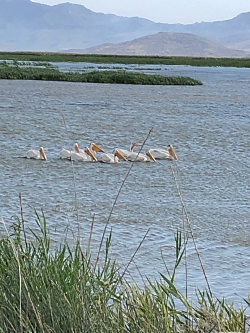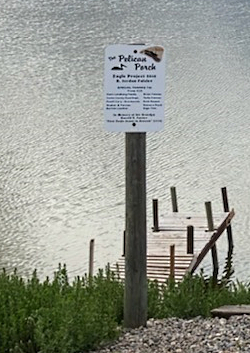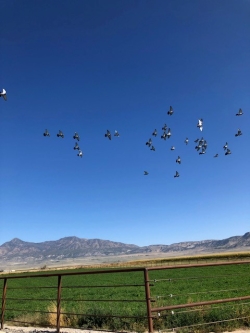
Photo Courtesy & © Mary Heers
“Here they come!” Derek spotted the lead group of 40 as they flew into view, just over the tops of two trees a few hundred yards away. When the first bird entered the loft, the computer chip in its leg band sent a message to the loft computer. We heard the ping, It was 11:19. The lead group had flown 180 miles in three hours and 19 minutes. That made the average speed close to 55 mph.
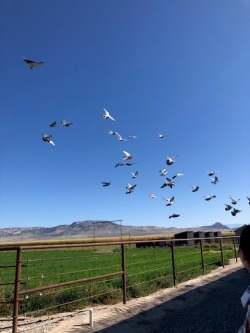
Photo Courtesy & © Mary Heers
I had begun my own journey into this world of avian athletes last summer at the Cache County Fair. I had gone to cheer on my neighbor’s kids who were showing their pigs, and ducked into the bird barn on the way out. I was expecting chickens, but found my self surrounded by pigeons. This encounter soon led me to Hyrum to meet the main exhibitor, Randy Balls. He met me at the door to his house with a big smile. “Do you want to see them fly?” he asked. We spent the next hour sitting on a bench in his backyard, watching his pigeons as they circled and swooped overhead Randy’s love for his birds was contagious, and I guess I shouldn’t be surprised that I now find myself with four homing pigeons of my own in an improvised coop in my backyard.
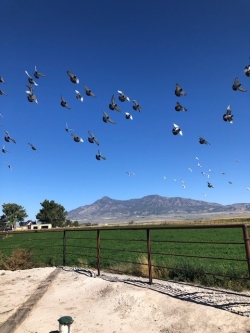
Photo Courtesy & © Mary Heers
A desperate message was written and placed in the small canister tied to Cher Ami’s leg. “We are along the road parallel to 276.4 Our own artillery is dropping a barrage directly on us. For heaven’s sake, stop it.” Cher Ami took off. She was hit by bullets that blinded one eye and shot off part of her right leg. But she kept going. She delivered the message to army headquarters, and was credited with saving the lives of one hundred and ninety four American soldiers.
We know the messaging partnership between homing pigeons and humans can be traced all the way back to the pharaohs of ancient Egypt. What we don’t know is exactly how pigeons do it. Somehow they are attuned to the earth’s gravitational fields in ways that humans are not. I like the mystery of it. I like keeping alive the flame of wonder and awe as we continue to learn and interact with the natural world
This is Mary Heers and I’m Wild About Utah.
Credits:
Photos: Courtesy & Copyright Mary Heers, Photographer
Featured Audio: Courtesy and Copyright Kevin Colver https://wildstore.wildsanctuary.com/collections/special-collections/kevin-colver
Text & Voice: Mary Heers, Generous Contributor, Utah Public Radio
Additional Reading: Lyle Bingham, Webmaster Bridgerland Audubon Society
Additional Reading
Pieces by Mary Heers on Wild About Utah: https://wildaboututah.org/author/mary-heers/
The Incredible Carrier Pigeons of the First World War, Imperial War Museum, https://www.iwm.org.uk/history/the-incredible-carrier-pigeons-of-the-first-world-war
Balogh, Diane, Communications history: homing pigeons, Ooma Blog, October 16, 2024, https://www.ooma.com/blog/communications-history-homing-pigeons/
Domestic Pigeons Explained: The Complete Guide, Pigeonpedia, https://pigeonpedia.com/domestic-pigeons/

